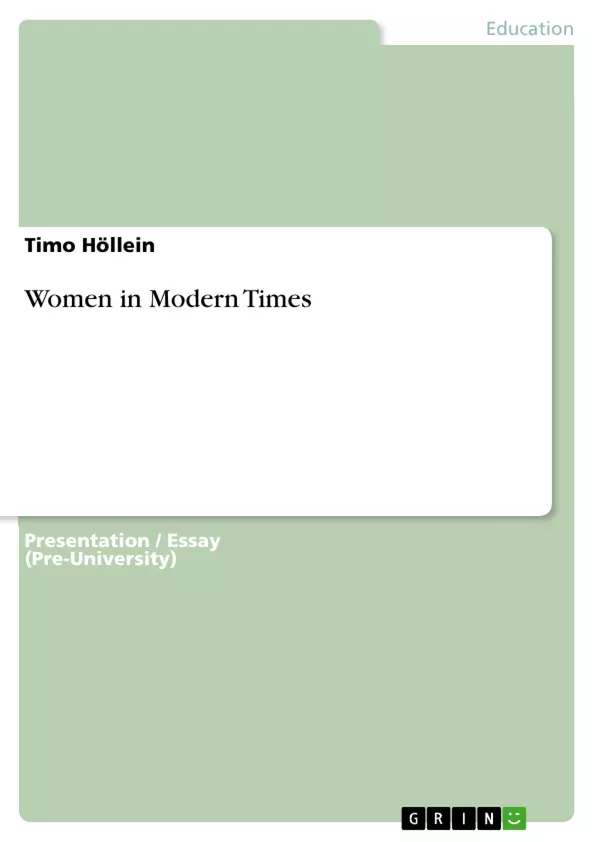An article about the progress that has been made in the emancipation of women from the 16th to the 21th century, remains of “gender roles” nowadays and the differences in the idea of women in western and eastern civilisations.
Table of Contents
- The Evolution of Women's Roles
- Women in Elizabethan England
- The Impact of the Industrial Revolution
- The Rise of Feminism
- Women in Modern Times
- Women in Western Civilisations
- The Plight of Women in the Third World
Objectives and Key Themes
This article aims to provide an overview of the evolution of women's roles and their social standing throughout history, focusing on the differences between Western and Eastern societies. It explores the progress made in the emancipation of women, the persistence of "gender roles," and the contrasting realities for women in different parts of the world.- Historical Evolution of Women's Roles
- Impact of Westernization on Women's Lives
- The Persistence of "Gender Roles" and Traditional Ideologies
- Social and Economic Inequalities Faced by Women
- Global Perspectives on Women's Emancipation
Chapter Summaries
The Evolution of Women's Roles
This section examines the traditional roles and limitations imposed upon women in Elizabethan England. It highlights the societal expectations of women as wives and mothers, their lack of access to education and employment, and the limitations imposed on their freedom and autonomy.Women in Modern Times
This section explores the progress made in women's emancipation, particularly in Western countries. It describes how women have gained greater rights, opportunities, and equality in education, employment, and political participation. However, it also acknowledges that traditional gender roles and inequalities still persist, particularly in areas of employment, parental responsibilities, and household chores.The Plight of Women in the Third World
This section highlights the stark reality of women's lives in many developing countries. It describes the challenges faced by women in the Third World, including poverty, illiteracy, limited access to healthcare, and traditional cultural practices that limit their freedom and opportunities.Keywords
This article explores the historical trajectory of women's roles, highlighting the themes of gender roles, women's emancipation, social and economic inequalities, cultural differences, and global perspectives on women's rights. Key concepts include the impact of the Industrial Revolution, the rise of feminism, and the challenges faced by women in both developed and developing countries.
Excerpt out of 4 pages
- scroll top
- Quote paper
- Timo Höllein (Author), 2010, Women in Modern Times, Munich, GRIN Verlag, https://www.grin.com/document/264733
Look inside the ebook



